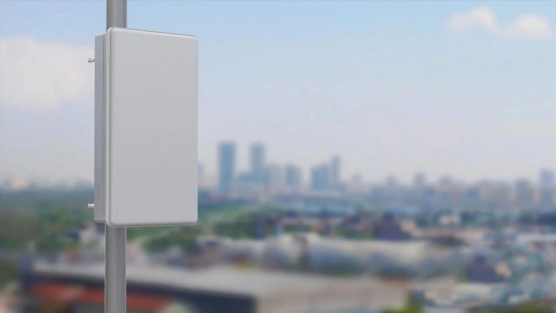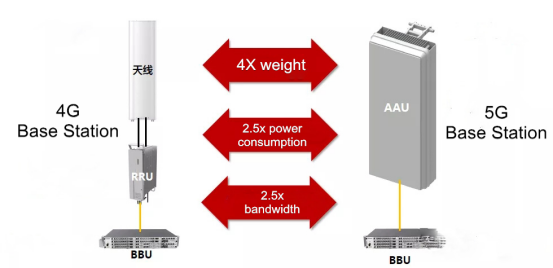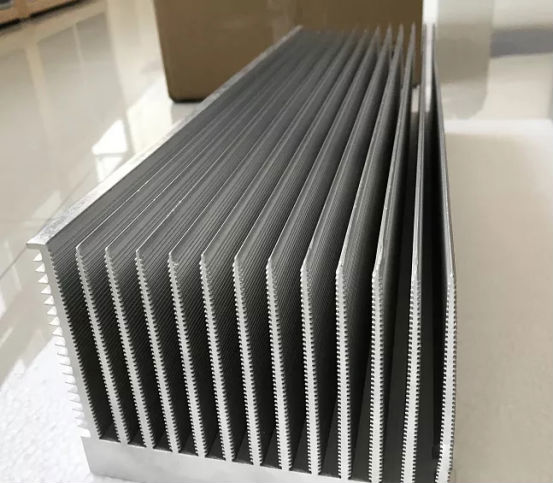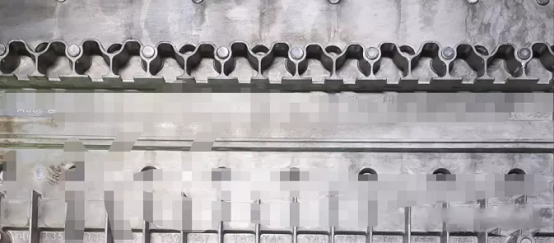5G network construction is speeding up. It is expected that the number of 5G base stations in China will exceed 600000 by the end of the year, realizing continuous outdoor coverage of prefecture level cities, key coverage of counties and towns, and indoor coverage of key scenes. From the current situation of 5G construction in China, it is estimated that 5G construction is less affected by the epidemic. Many manufacturers immediately put 4G expansion and 5G construction into operation after returning to work.

The mass MIMO technology makes the TRX link of 5G base station increase greatly, and the power consumption of 5G base station is about 2.5-3 times of 4G. At the same time, 5G AAU integrates the antenna and RRU, but its volume is developing towards small-scale and lightweight, which requires more efficient heat dissipation mode, so it is more demanding on material selection and heat dissipation mode. At the same time, AAU is usually installed in the roof of the iron frame, the height of the field, for the installation site also need to consider the building's load-bearing capacity, floor area and so on, so AAU reduction of volume and weight is also an important factor to be considered.

According to the characteristics of "large section, high thermal conductivity, low density and homogeneity" of base station structure material, magnesium, as the lightest metal structure material, has lower thermal conductivity than aluminum, but has higher strength and better shock absorption, which is an important choice of 5G base station structure material except aluminum.

>>>>Characteristics of magnesium alloy
1. On the basis of traditional magnesium alloy, optimize the composition and heat treatment process to optimize the thermal conductivity ratio, which is basically equivalent to the thermal conductivity of aluminum alloy. The thermal conductivity of magnesium alloy materials developed by some manufacturers is in the range of 180-200w / MK, the yield strength is ≥ 150MPa, and the elongation is ≥ 10%.。
2. The specific gravity of magnesium alloy is 66% of that of aluminum alloy and 30% of that of copper alloy. Because of the lightweight requirement of 5G base station high-altitude installation, the weight reduction of heat sink is of great significance to the promotion of 5G technology.
3. While realizing high heat conduction, magnesium alloy has high specific strength, recyclability and low cost.
Although the density of magnesium alloy is only 2 / 3 of that of aluminum and 1 / 4 of that of steel, its thermal conductivity is only 60% of that of aluminum alloy. The deep melting and forming of magnesium alloy solution has become a new problem. Every minor defect in the finished product means that the "formula" needs to be readjusted. After repeated tests, tests and improvements, some manufacturers have finally developed high-strength and high thermal conductivity magnesium alloy materials. Based on the lightweight advantages of magnesium alloy, Huawei, ZTE and other communication manufacturers have used magnesium alloy materials for base station structural parts.

Magnesium alloy not only has a broad application prospect in the fields of high-speed rail, subway, automobile, 3C electronics, aerospace, national defense and military industry, but also has a gradually in-depth application in 5G base station. With the rapid development of new base station, the momentum of 5G base station using high-strength and high thermal conductivity magnesium alloy material is more and more fierce.
5G base stations have accelerated their landing. The Ministry of industry and information technology of China has revealed that 500000 5G base stations will be built in 2020. In order to ensure the signal transmission of various 5G devices in the future, in addition to 5G non-metallic materials, precision metal structures will also usher in a new wave of demand peaks.
For those who need to consult, please add the following contact information:
Victor Xu:
Skype:xam5460
Phone:+86 18925551175
Email:hr01@0769my.com
